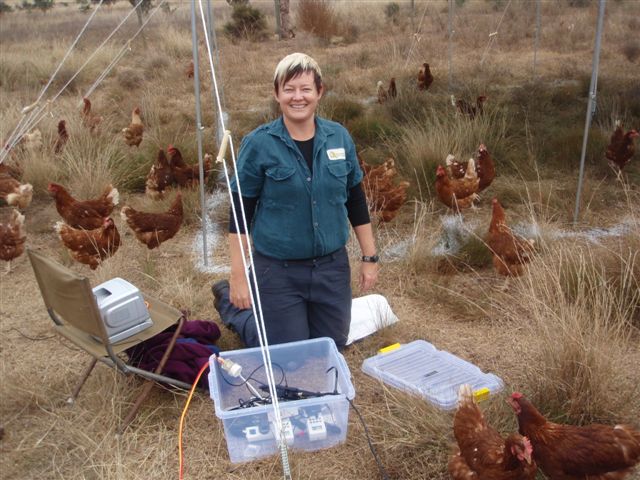The Poultry CRC, in conjunction with the Queensland Department of Primary Industries and Fisheries (QDPI&F), will be conducting extension activities to help free range poultry producers optimise the liveability of free range layers.
The activities are part of a strategy of transferring to industry research results from a project looking at mortality in free range layer flocks. The Project Leader, QDPI&F’s Tanya Nagle, will present a series of workshops aimed at keeping free range egg producers up-to-date about biosecurity, vaccination and other issues relevant to free range poultry systems.
“Disease is more prevalent in free range flocks due to hens being in contact with the ground, so producers have to be on top of biosecurity, to help prevent disease, and disease management once a flock has been infected,” explained Tanya.
“It is important that everyone involved in the production of eggs, from farm manager to farmhands, understands the importance of biosecurity principles and makes a start at implementing them on their property.”
“Following basic biosecurity principles should improve hen health and welfare, thereby increasing egg production and reducing on-farm inefficiencies.”
An article based on the project’s key findings, along with the Executive Summary from the Final Report, are now freely available on Poultryhub. The information in the article, Optimising liveability of free-range layers, is derived directly from an epidemiological survey of five flocks from free range farms in Southeast Queensland and includes suggestions on rearing viable free range pullets and management approaches to reducing free range layer deaths, particularly the prevention of bacterial infections and the importance of correct disease diagnosis.
Free range producers will be invited to attend the workshops, which will be funded by the Poultry CRC, once logistics are sorted out and dates confirmed.
A copy of the full Final Report can be requested from the Poultry CRC’s Communications Manager, Chris Day.


